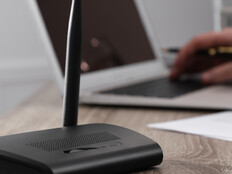Wi-Fi HaLow (802.11ah) Bolsters Connectivity to IoT Devices
It’s not yet available in the marketplace, but industry experts expect that Wi-Fi HaLow will prove to be an exciting development in Wi-Fi’s near future.
The technology, developed by the Wi-Fi Alliance and expected to be released in 2018, will solve two shortcomings of traditional Wi-Fi: power consumption and coverage, both of which are particularly helpful along Internet of Things (IoT) deployments.
The technology operates in frequency bands below 1 gigahertz and offers longer range, lower power connectivity. Wi-Fi HaLow has a range of nearly double today’s standard 2.4GHz Wi-Fi connections, says Kevin Robinson, vice president of marketing at the Wi-Fi Alliance. HaLow extends Wi-Fi into the 900-megahertz band, enabling the low power connectivity necessary for applications such as sensors and wearables, and will not only transmit signals farther, but also provide more robust connections in challenging environments where the ability to more easily penetrate walls or other barriers is an important consideration.
What Does Wi-Fi HaLow Mean for the Internet of Things?
Those strengths would work very well for San Mateo, Calif., where officials expect design work to begin in January on a full-scale smart parking program.
Sue-Ellen Atkinson, parking manager for the city, says officials there have already deployed some parking sensors as a pilot in the downtown area. “The end goal is a system that is easy for the public to use and reduces congestion downtown as a result of drivers and visitors circling to find parking,” she says. The city plans to have new infrastructure in place in 2018 that will allow for multispace pay stations (supplemented with traditional parking meters as needed) coupled with real-time parking occupancy sensors, new signage and third-party apps.
HaLow will not replace existing Wi-Fi, says Mark Hung, research vice president and lead analyst in IoT for Gartner. “The most likely case is that it will coexist with current Wi-Fi,” he said.
Another technology, WiGig, has gained little traction so far, but Hung predicts its popularity will grow steadily in the next few years. WiGig allows Wi-Fi devices to access the uncongested 60GHz frequency band with wide channels to transmit data efficiently at multi-gigabit-per-second speeds.
That allows for expanded capacity and focused transmission between devices to reduce interference, even in crowded environments. HaLow will broadly adopt existing Wi-Fi protocols and deliver many of the benefits that consumers have come to expect from Wi-Fi today, including multivendor interoperability, strong government-grade security and easy setup.
“With every successive Wi-Fi generation, the calling card is faster, better, farther,” Hung said.








